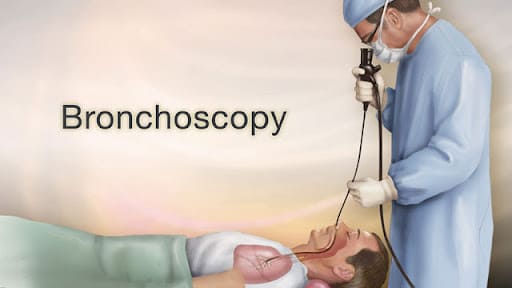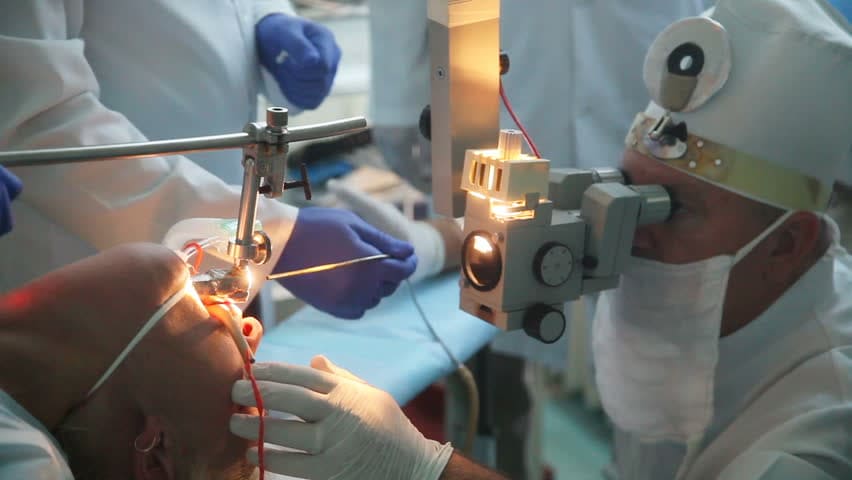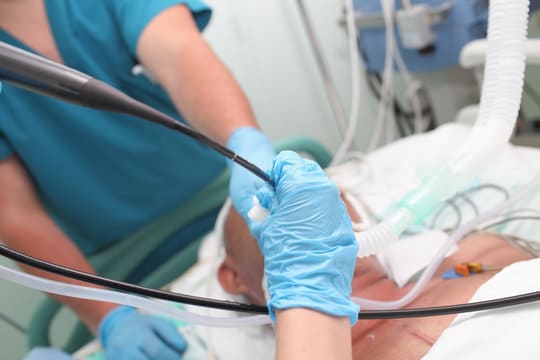Bronchoscopy Procedure
15
Sep
2021
What is a Bronchoscopy?
Bronchoscopy is a procedure that lets doctors or primary care physicians look at your lungs and air passages. It is generally performed by a doctor or primary care physician who specializes in lung disorders (a pulmonologist). At the time of your bronchoscopy, a small tube (bronchoscope) is passed through your nose or mouth, down your throat, and into your lungs.

A bronchoscopy is most frequently performed using a flexible bronchoscope. Although, in specific situations - such as if there is a lot of bleeding in your lungs or a large object is stuck in your airway - a rigid bronchoscope might be required.
Why is it done?
A bronchoscopy is generally done to find the cause of a lung problem. For instance, your doctor or primary care physician may refer you for bronchoscopy because you have a persistent cough, infection, or something unusual is seen on a chest X-ray or other test.
Other reasons for doing a bronchoscopy to diagnose a lung issue include:
- Identification of a lung infection
- Biopsy of tissue from the lung
- Removal of mucus, a foreign body, or other blockages in the airways or lungs, like a tumor
- Placing of a small tube to hold open an airway (stent)
- Treatment of a lung issue (interventional bronchoscopy), like bleeding, an abnormal narrowing of the airway (stricture), or a collapsed lung (pneumothorax)
During some procedures, special devices might be passed through the bronchoscope, like a tool to get a biopsy, an electrocautery probe to control bleeding, or a laser to lower the size of an airway tumor. Special techniques are used to guide the collection of biopsies to make sure the desired region of the lung is sampled.
In people with lung cancer, a bronchoscope with a built-in ultrasound probe might be used to check the lymph nodes in the chest. This is known as endobronchial ultrasound (EBUS) and helps doctors or primary care physicians determine the appropriate treatment. (An EBUS) might be used for other types of cancer to determine if cancer has spread.
Bronchoscopy Risks
Complications from bronchoscopy are rare and generally minor; - however, they are rarely severe. Complications might be more likely if airways are inflamed or damaged by disease. Complications might be associated with the procedure itself or with the sedative or topical numbing medicine.
- Bleeding - Bleeding is more likely if a biopsy was taken. Generally, bleeding is minor and stops without treatment.
- Collapsed lung - In rare cases, an airway might be injured during a bronchoscopy. If the lung is punctured, air could collect in the space around the lung, which could cause the lung to collapse. Generally, this problem is easily treated, but it might need admission to the hospital.
- Fever - Fever is fairly common after bronchoscopy but is not always a sign of infection. Treatment is generally not required.

How you prepare
Preparation for your bronchoscopy generally involves food and medication restrictions, as well as discussion about additional precautions.
Food and medications
You might be requested to stop taking blood-thinning medications like aspirin, clopidogrel (Plavix), and warfarin (Coumadin, Jantoven) a few days before the bronchoscopy. You will also be asked not to eat or drink for 4 to 8 hours before the procedure.
Clothing and personal items
On the day of the procedure, you will be requested to put on a gown and remove any dentures, partial dentures, or removable bridges. You might also be asked to remove hearing aids, contact lenses, or glasses.
Other precautions
If you will be going home after the procedure, you will require a friend or family member to take you home. You would not be able to drive because of the lingering effects of the drugs used at the time of the procedure. It is also a good idea to keep somebody with you for the rest of the day.
What you can expect
A bronchoscopy is generally done in a procedure room in a clinic or in a hospital operating room. The entire procedure, including preparation and recovery time, generally takes about 4 hours. The bronchoscopy itself generally lasts about 30 to 60 minutes.
Before the procedure
You will be requested to sit or lie down on a table or a bed with your arms at your sides. You will be connected to monitors so that the health care team could track your heart rate, blood pressure, and oxygen level at the time of the procedure.
You will be given sedative medicine through a vein intravenously (IV) to help you relax. You will feel sleepy, but you will still be awake, breathing on your own, and you will be able to indicate a response to any questions your doctor or primary care physician might ask you at the time of the procedure. Sedative drugs usually result in you having a very short memory of the bronchoscopy procedure once it is finished.

A numbing medication known as an anesthetic will be sprayed in your throat. At times an anesthetic gel is rubbed in your nose. These drugs numb the regions, helping to lessen gagging and coughing as the bronchoscope is placed into your throat. At first, the medicine might taste unpleasant, but the taste will go away.
During the procedure
At the time of the bronchoscopy, the bronchoscope is placed in your nose or mouth. The bronchoscope has a light and a very tiny camera at its tip that displays images on a monitor to help guide your doctor or primary care physician in performing the procedure.
The bronchoscope is advanced gradually down the back of your throat, through the vocal cords, and into the airways. It might feel uncomfortable, but it should not hurt. Your medical team will try to make you as comfortable as possible.
Samples of tissue and fluid might be taken and procedures might be performed using devices passed through the bronchoscope. Your doctor or primary care physician might ask if you have pain in your chest, back or shoulders. Generally, you should not feel pain.
After the procedure
You will be monitored for many hours after your bronchoscopy. Your mouth and throat will likely be numb for a couple of hours. You would not be allowed to eat or drink until the numbness wears off. This helps prevent food and liquids from entering your airways and lungs.
When your mouth and throat are no longer numb, and you are able to swallow and cough normally again, you could have something to drink. Begin with sips of water. Then you might eat soft foods, like soup and applesauce. Add other foods that you are comfortable with.
You might have a mild sore throat, hoarseness, cough, or muscle aches. This is normal. Warm water gargles and throat lozenges could help lessen the discomfort. Just make sure all the numbness is gone before you try gargling or sucking on lozenges.
Call your doctor or primary care physician right away if you:
- Have a fever that lasts more than twenty-four hours
- Have increasing chest pain
- Have difficulty breathing
- Cough up or spit out more than a few tablespoons of blood
Bronchoscopy Results
Your doctor or primary care physician will generally discuss bronchoscopy results with you 1 to 3 days after the procedure. Your doctor or primary care physician will use the results to decide how to treat any lung problems that were found or discuss procedures that were done. It is also possible that you might require other tests or procedures.
If a biopsy was taken at the time of the bronchoscopy, it will need to be reviewed by a pathologist. Because the tissue specimens require special preparation, some results take longer than others to return. Some biopsy specimens will need to be sent for genetic testing, which may take 2 weeks or more.
Hill Regional (HRH) Hospital is here to assist all your medical needs with specialists and surgeons trained and experienced in the most advanced treatments. Our highly qualified doctors, nurses, and administrators are dedicated to caring for you with compassion in our state-of-the-art facilities.
Call us on 254-580-8500 to book an appointment with our specialist doctors.